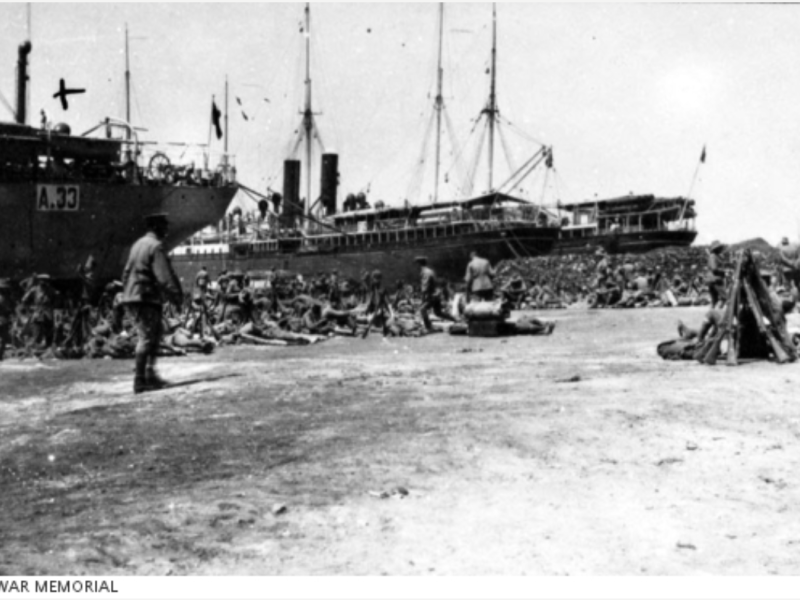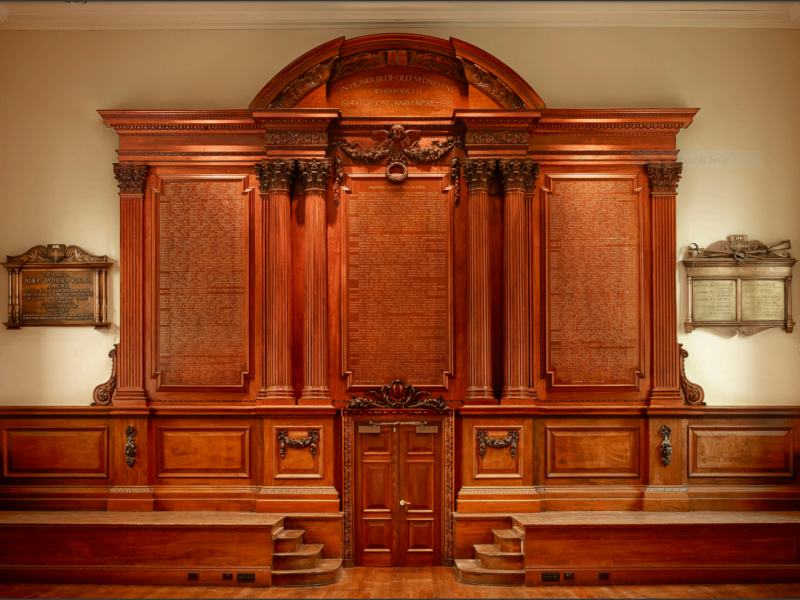Private Geoffrey Lewis Hargrave, 13th Battalion, AIF
Geoffrey Lewis Hargrave was born in 1892, the only son of six children of Lawrence and Margaret Hargrave of Woollahra in Sydney. Geoffrey’s father, Lawrence, was a well-known engineer, explorer, astronomer, inventor, and aeronautical engineer, who invented the box-kite and advanced the design of aircraft in the years before the first manned aerial flight.
Geoffrey Hargrave attended Sydney Grammar School, and later, studied engineering and worked as a junior draughtsman.
He enlisted in the Australian Imperial Force in September 1914, and after periods of training at Rosebery Park in Sydney and Broadmeadows Camp in Victoria, sailed with the first Australian troopship convoy as an original member of the 13th Battalion machine-gun section.
Destined for the fighting in Europe, the troopships were diverted to Egypt following Ottoman Turkey’s entry into the war. Hargrave spent several months training with his battalion at Mena Camp before Australian and New Zealand troops were drawn into allied plans to force a passage through the Dardanelles.
He landed on Gallipoli on 25 April 1915, coming ashore with troops of the 4th Brigade that afternoon. Over the following days, the 13th Battalion was involved in defending their tenuous hold on the precipitous terrain in the face of growing Turkish resistance. By the end of April, the battalion, along with the rest of the 4th Brigade, defended a sting of positions – Quinn’s, Courtney’s and Steele’s posts – on the heights above Pope’s Hill.
On 3 May, Geoffrey was involved in a combined Australian and New Zealand effort to better their situation by capturing a hill known as Baby 700 – a position overlooking the Anzac positions that was occupied by the Turks. After a short but furious bombardment by the Royal Navy, the infantry advanced on their objective only to be met with a fusillade of Turkish rifle and machine-gun fire. The 13th Battalion dug in well short of its objective, and advanced no further during the attack.
The 4th Brigade’s assault on Baby 700 was costly and unsuccessful but the troops of the 13th Battalion continued to hold their gains until they were relieved several days later. By then over 80 men had been killed and over 200 wounded.
Among the dead was Geoffrey Hargrave whose remains were never recovered from the battlefield. He was 21 years old.
Today his name is listed on the Lone Pine Memorial alongside 5,000 Australian and New Zealand soldiers who died on Gallipoli and have no known grave.
The historical records do not document the grief and sorrow of the Hargrave family losing their only son in the war. However, his father, Lawrence Hargrave, died of peritonitis at his home at Woollahra just six weeks later. Newspapers at the time speculated that the news “was a great blow to him, and undoubtedly hastened the end”.
Aaron Pegram, Historian, Military History Section
- Australian War Memorial https://www.awm.gov.au/collection/C2278401

 Australian War Memorial
Australian War Memorial